¶ User Management
User management lets you define access rights and permissions for various types of users. Users can be, for example, family members, guests in a hotel, or tenants in an office building.
¶ User Roles
- User – Can change values manually (e.g., change temperature setpoint, switch on/off light). Access to Smart Rules and advanced device settings can be limited by Admin or Service users.
- Admin – Can add or remove users and change basic system settings.
- Service – Cannot add or remove users but has access to all system settings and configurations. This level is used by installation partners.
¶ Types of User Accounts
- TapHome Account – A free account based on a login email and password. The user is authenticated via the cloud, and a list of locations is sent from the server. No login is required when switching between locations, as authentication is always performed by the controller. A TapHome account is used in most cases.
- Local Account – Each control unit has a predefined local user with the login name "admin" and password "admin." The password can be changed. A local account is only recommended in special cases:
- When the end user should not be required to complete the account creation process (e.g., a tenant in the building uses a pre-generated login/password).
- When complete independence from the Internet or cloud servers is required.
¶ Adding a New User
Go to Menu → Settings → All Users → Add New User.
¶ Permissions
Permissions enable setting various types of access rights to devices and Smart Rules. For example, a service person may want to restrict users from performing certain actions that could inhibit system functionality while still allowing access to weekly schedules, blinds sensitivity settings, etc.
Permissions can be applied to:
- Specific users
- User groups (Service, Admin, User)
Use the icons in the top right corner to quickly check what each user group (Service, Admin, or User) can see.
¶ Example: List of Devices
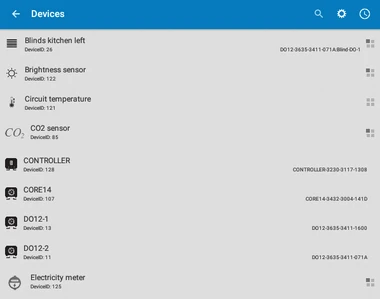
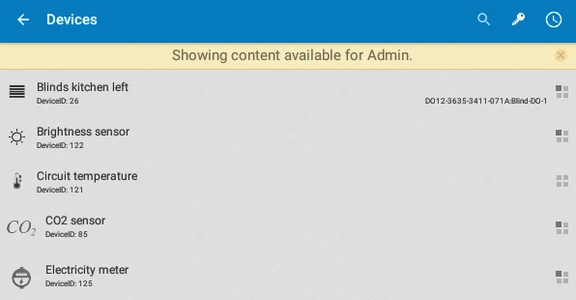
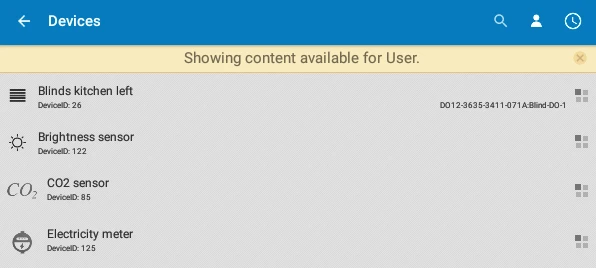
-
Service user can see both physical modules as well as virtual control devices.
-
If the Service user decides, the Admin user may not be able to see, for example, IO modules.
-
If the Service user decides, the User may not be able to see system devices like, for example, the hot water circuit temperature.
¶ Example - Dashboard
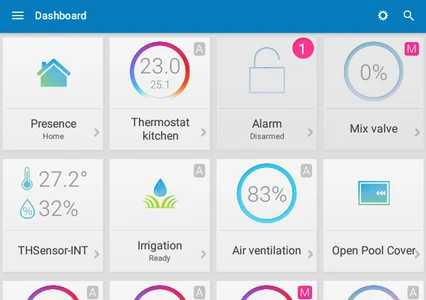


- Service permissions
- Admin permissions
- User permissions
¶ Example - Smart Rules
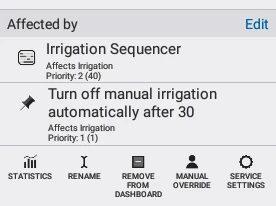
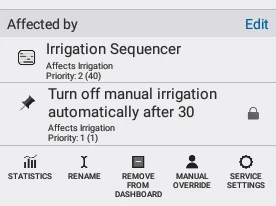
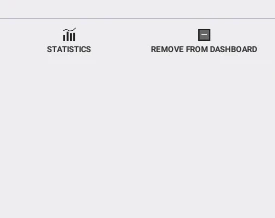
-
Service can see and edit all Smart Rules.
-
Admin can see all Smart Rules but can only adjust, for example, the Irrigation sequencer.
-
User cannot see or adjust any Smart Rules for irrigation. User also cannot change Manual Override settings, rename the device, or access Service settings.
¶ Permissions for Devices and for Smart Rules
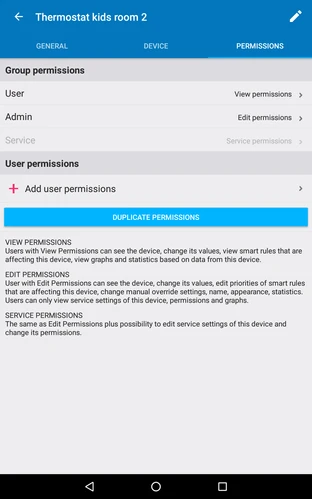
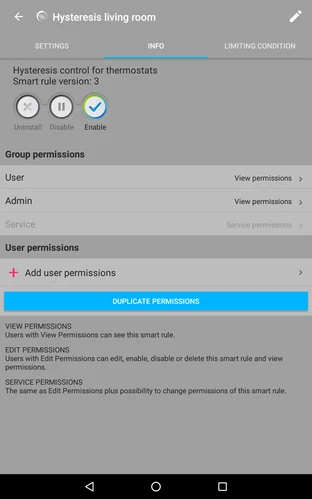
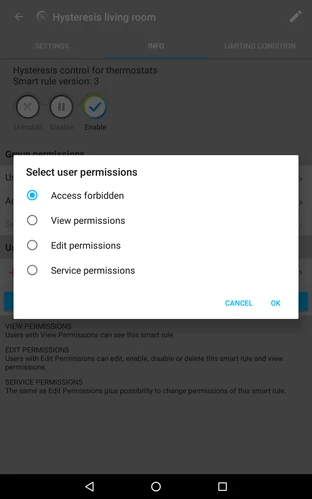
Service settings of the device → Permissions tab
Open specific Smart Rule → Info tab
¶ Default Permissions
To speed up the configuration process, every specific type of Smart Rule and device has a definition of ‘default’ permissions.
If these are changed, they are automatically applied to all devices or Smart Rules of the same type that do not have custom permissions set.
¶ Menu → Settings → Permissions
Default permissions for Location, Devices, and Smart Rules
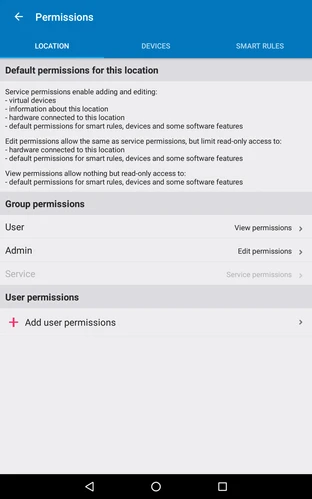
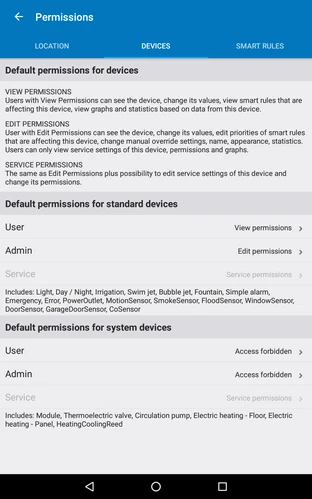
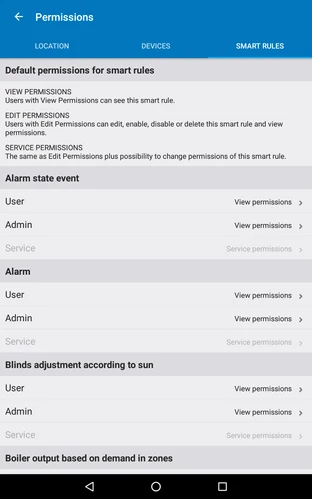
-
Define what permission level should be pre-set for specific group or specific user throughout the location. E.g. if you don’t want administrators to edit anything, you grant View permissions instead of Edit permissions for Admin group.
-
Define default permissions for standard devices, e.g. device types Light, Day/Night, Irrigation, Pool accessories, Alarm, Power outlet, different types of sensors.
-
Every type of Smart Rule can have its default permissions.